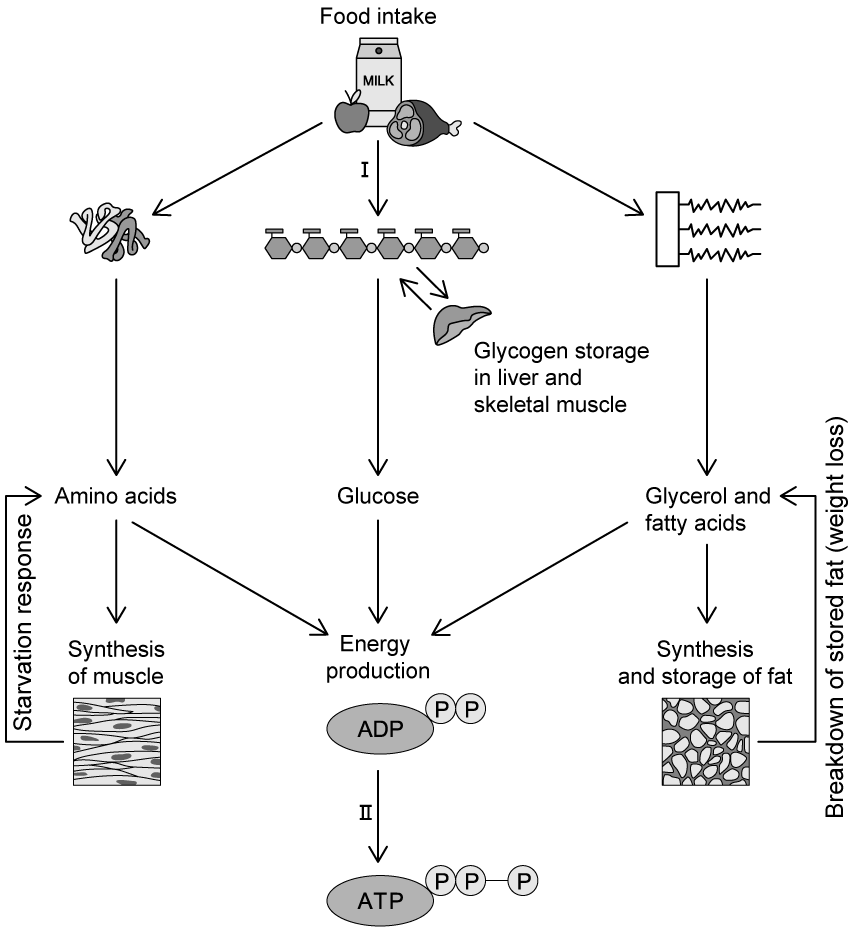a)
Define hydrophilic.
[1 mark]
Assess your score
View Answer
b)
State two advantages of a carbon atom being able to form four bonds to neighbouring atoms.
[2 marks]
Assess your score
View Answer
c)
List three carbon compounds that living organisms are based upon.
[3 marks]
Assess your score
View Answer
d)
State which part of metabolism is occurring at II in the flowchart below.
[1 mark]
Assess your score
View Answer
Next Question
a)
State the aspect of the molecular behaviour of water that is used to explain why it is highly important to living organisms.
[1 mark]
Assess your score
View Answer
b)
Two of the properties of water are its cohesive and adhesive forces.
Describe how these properties are useful to living organisms.
[ 3 marks ]
Assess your score
View Answer
c)
Both water and methane are small molecules containing single covalent bonds between their atoms.
State two differences between these two molecules that make their physical properties very different.
[2 marks]
Assess your score
View Answer
d)
List two physical properties, associated with their state of matter, that differ between water and methane.
[2 marks]
Assess your score
View Answer
Previous Question Next Question
a)
Define molecular biology.
[1 mark]
Assess your score
View Answer
b)
State the name of the compound that was synthesised artificially, providing evidence that living organisms are not required to produce organic compounds.
[1 mark]
Assess your score
View Answer
c)
Draw a labelled diagram of a water molecule.
[3 marks]
Assess your score
View Answer
Previous Question Next Question
a)
Identify which of the diagrams below is a lipid, giving one reason why.
[2 marks]
Assess your score
View Answer
b)
Draw a molecular diagram of D-ribose.
[2 marks]
Assess your score
View Answer
c)
List, using simplified notation, two of the chemical groups found in a generalised amino acid.
[2 marks]
Assess your score
View Answer
d)
State, giving one reason, which diagram shows the structure of a saturated fatty acid.
[2 marks]
Assess your score
View Answer
Previous Question Next Question
One mark is available for clarity of communication throughout this question.
a)
Outline the theory that states that organic molecules could only be derived from living systems.
[3 marks]
Assess your score
View Answer
b)
Distinguish between anabolic and catabolic reactions.
Include one example of each reaction.
[5 marks]
Assess your score
View Answer
c)
Describe the properties of water molecules that enable them to transport metabolites, using four named examples.
[7 marks]
Assess your score
View Answer
Previous Question


